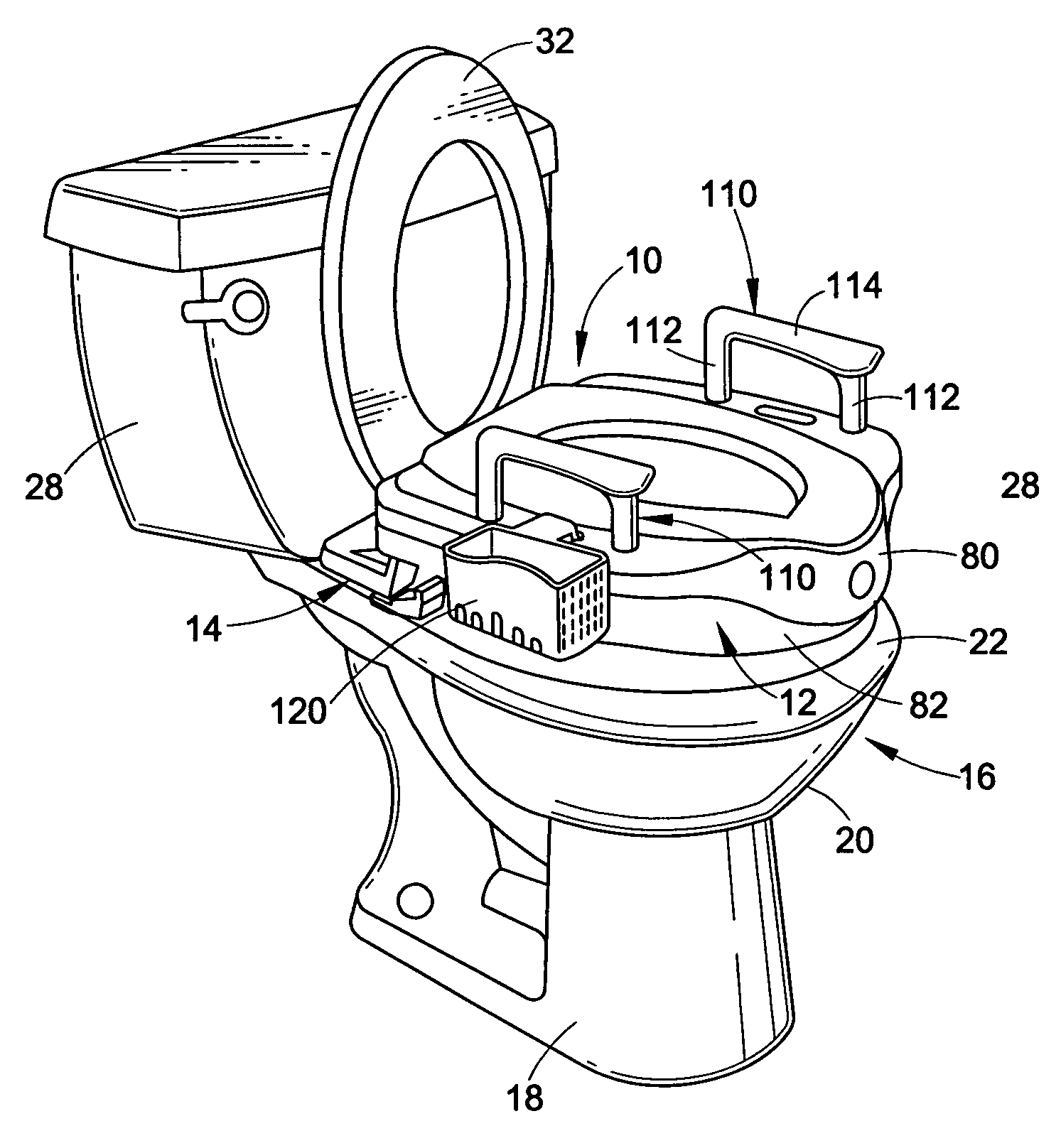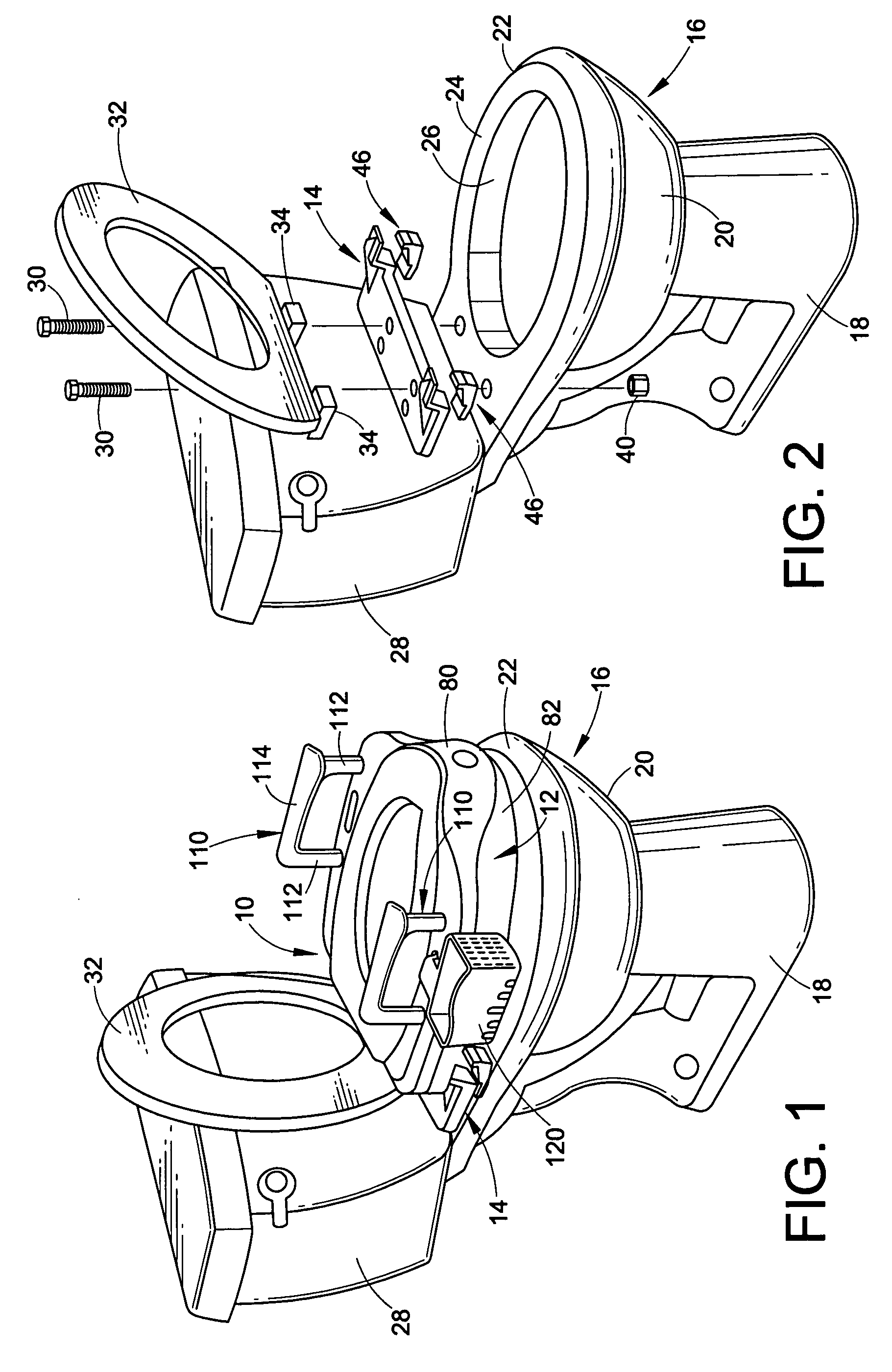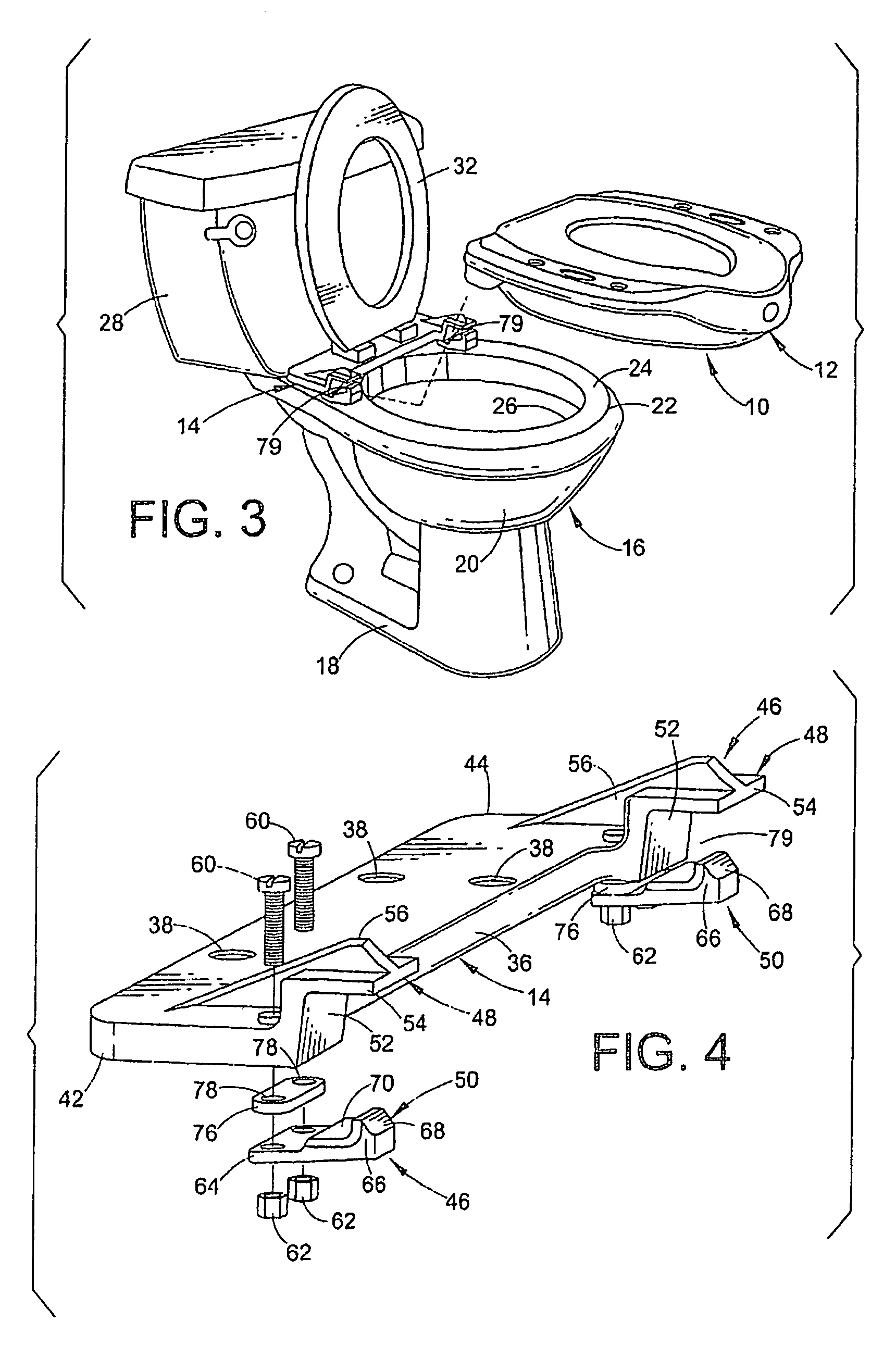Elevated toilet seat
- Summary
- Abstract
- Description
- Claims
- Application Information
AI Technical Summary
Benefits of technology
Problems solved by technology
Method used
Image
Examples
Embodiment Construction
[0026]FIGS. 1–3 illustrate the elevated toilet seat assembly of the present invention generally at 10. The toilet seat assembly has two major components, a seating ring 12 and a mounting bracket 14. The seating ring 12 has the usual shape and dimensions for supporting a user on a toilet. The mounting bracket 14 is attached to a toilet bowl. The seating ring 12 is removably mountable on the toilet bowl and is retained thereon by releasable engagement with the mounting bracket 14. This engagement will be explained further below.
[0027]FIG. 2 shows a conventional toilet 16 and the mounting bracket 14 installed thereon. The toilet includes a base 18 supporting a bowl 20. The top of the bowl has an upper rim 22 that includes a top land 24. The rim defines an opening 26 which in this case has an oval shape. The oval opening has a major diameter and a minor diameter. The bowl 20 may be connected to the usual water closet shown at 28. The mounting bracket 14 rests on the top land 24 of the r...
PUM
 Login to View More
Login to View More Abstract
Description
Claims
Application Information
 Login to View More
Login to View More - R&D
- Intellectual Property
- Life Sciences
- Materials
- Tech Scout
- Unparalleled Data Quality
- Higher Quality Content
- 60% Fewer Hallucinations
Browse by: Latest US Patents, China's latest patents, Technical Efficacy Thesaurus, Application Domain, Technology Topic, Popular Technical Reports.
© 2025 PatSnap. All rights reserved.Legal|Privacy policy|Modern Slavery Act Transparency Statement|Sitemap|About US| Contact US: help@patsnap.com



